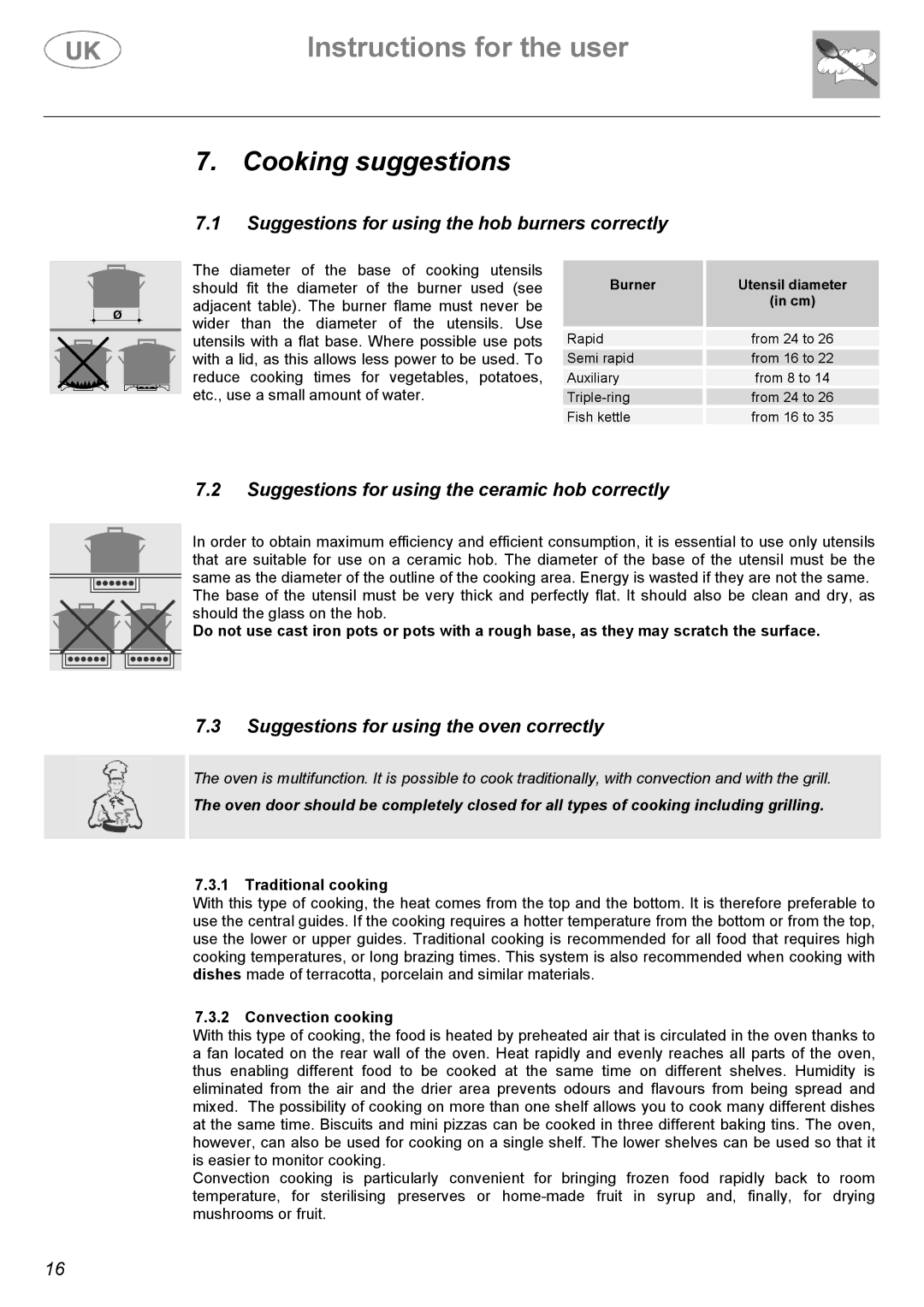
Instructions for the user
7. Cooking suggestions
7.1Suggestions for using the hob burners correctly
The diameter of the base of cooking utensils should fit the diameter of the burner used (see adjacent table). The burner flame must never be wider than the diameter of the utensils. Use utensils with a flat base. Where possible use pots with a lid, as this allows less power to be used. To reduce cooking times for vegetables, potatoes, etc., use a small amount of water.
Burner
Rapid
Semi rapid
Auxiliary
Fish kettle
Utensil diameter
(in cm)
from 24 to 26
from 16 to 22
from 8 to 14
from 24 to 26
from 16 to 35
7.2Suggestions for using the ceramic hob correctly
In order to obtain maximum efficiency and efficient consumption, it is essential to use only utensils that are suitable for use on a ceramic hob. The diameter of the base of the utensil must be the same as the diameter of the outline of the cooking area. Energy is wasted if they are not the same. The base of the utensil must be very thick and perfectly flat. It should also be clean and dry, as should the glass on the hob.
Do not use cast iron pots or pots with a rough base, as they may scratch the surface.
7.3Suggestions for using the oven correctly
The oven is multifunction. It is possible to cook traditionally, with convection and with the grill.
The oven door should be completely closed for all types of cooking including grilling.
7.3.1Traditional cooking
With this type of cooking, the heat comes from the top and the bottom. It is therefore preferable to use the central guides. If the cooking requires a hotter temperature from the bottom or from the top, use the lower or upper guides. Traditional cooking is recommended for all food that requires high cooking temperatures, or long brazing times. This system is also recommended when cooking with dishes made of terracotta, porcelain and similar materials.
7.3.2Convection cooking
With this type of cooking, the food is heated by preheated air that is circulated in the oven thanks to a fan located on the rear wall of the oven. Heat rapidly and evenly reaches all parts of the oven, thus enabling different food to be cooked at the same time on different shelves. Humidity is eliminated from the air and the drier area prevents odours and flavours from being spread and mixed. The possibility of cooking on more than one shelf allows you to cook many different dishes at the same time. Biscuits and mini pizzas can be cooked in three different baking tins. The oven, however, can also be used for cooking on a single shelf. The lower shelves can be used so that it is easier to monitor cooking.
Convection cooking is particularly convenient for bringing frozen food rapidly back to room temperature, for sterilising preserves or
16
